Ditapis dengan
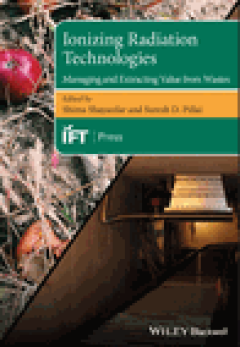
Ionizing Radiation Technologies: Managing and Extracting Value from Wastes
Ionizing Radiation Technologies An authoritative overview of major advances in the application of ionizing radiation technologies to industrial, agricultural, and municipal waste products In Ionizing Radiation Technologies: Managing and Extracting Value from Wastes, a team of expert researchers delivers a broad overview of the value trapped in waste streams and how a strategic application o…
- Edisi
- -
- ISBN/ISSN
- 9781119488538
- Deskripsi Fisik
- xvi,266p.:illus.;25cm.
- Judul Seri
- -
- No. Panggil
- 612.01448 SHA I

Preservation of Food by Ionizing Radiation Volume II
Food Scientists the world over should keep abreast of advances in konwledge and techniques in this developing new food process. The place to start is with these three volumes, which are, without question, the most comprehensive and the most authoritative source fo information on the basic science and technology yet published on food preservation by the application of ionizing radiation.
- Edisi
- 2
- ISBN/ISSN
- 9781315896885
- Deskripsi Fisik
- xvii,341p.;illus, 23cm
- Judul Seri
- -
- No. Panggil
- 664.0288 JOS P
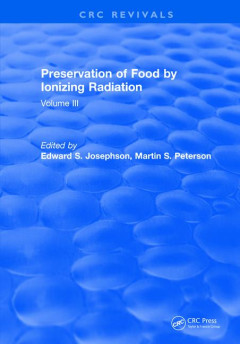
Preservation of Food by Ionizing Radiation Volume III
Science continues to grow. One of them is related to food preservation by ionizing radiation. This book is volume three dealing with ionizing radiation. The topic of discussion is divided into 8 chapters such as radurization and radicidation, radappertization of meat, poultry, finfish, shelfish. Then about sprout inhibition in tubers and bulbs (MM).
- Edisi
- 3
- ISBN/ISSN
- 9781315896892
- Deskripsi Fisik
- xvii,275p.;illus, 23cm
- Judul Seri
- -
- No. Panggil
- 664.0288 JOS P
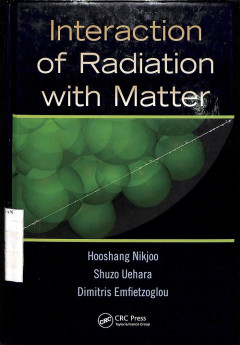
Interaction of Radiation with Matter
This book deals specifically with the interaction of radiation with matter. Specifically divided into four chapters. The subject covers basic knowledge of radiation, atoms, radioactivity, x-rays, interactions of electrons and photons, and is also accompanied by questions and problems. This textbook can be read by students of engineering physics, nuclear medicine, and nuclear engineering and eve…
- Edisi
- -
- ISBN/ISSN
- 9781439853573
- Deskripsi Fisik
- 348 p. : illus. ; 24 cm
- Judul Seri
- -
- No. Panggil
- 539.2 Nik i
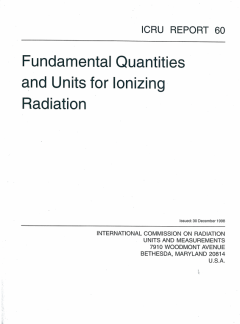
Fundamental Quantities And Units For Lonizing Radiation ICRU Report 60
This report supersedes Part A of ICRU report 33 (ICRU, 1980), dealing with quantities and units for general use.
- Edisi
- -
- ISBN/ISSN
- -
- Deskripsi Fisik
- 29p
- Judul Seri
- -
- No. Panggil
- 612.01448 ICR F
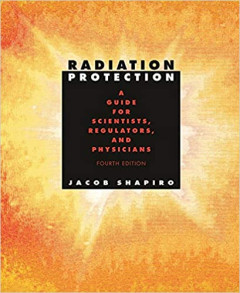
Radiation Protection: A Guide for Scientists, Regulators, and Physicians, Fou…
This highly successful manual has served for nearly three decades as the definitive guide to the safe use of radioactive materials. Completely revised and updated, the fourth edition presents a new dimension by adding coverage of nonionizing radiation, and is thus concerned with the entire field of radiation protection. The author takes the novel approach of introducing the whole range of en…
- Edisi
- -
- ISBN/ISSN
- 0674007409
- Deskripsi Fisik
- xxiv, 663 p. : Illus. ; 24 cm
- Judul Seri
- -
- No. Panggil
- 616 SHA r
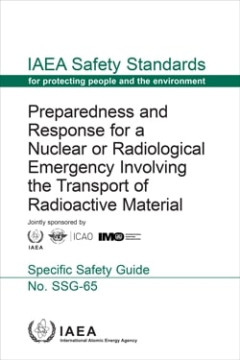
Preparedness and Response for a Nuclear or Radiological Emergency Involving t…
Radioactivity is a natural phenomenon and natural sources of radiation are features of the environment. Radiation and radioactive substances have many beneficial applications, ranging from power generation to uses in medicine, industry and agriculture. The radiation risks to workers and the public and to the environment that may arise from these applications have to be assessed and, if necessar…
- Edisi
- -
- ISBN/ISSN
- 978–92–0–127621–6
- Deskripsi Fisik
- 91 p
- Judul Seri
- IAEA safety standards series
- No. Panggil
- 614.876 IAE p
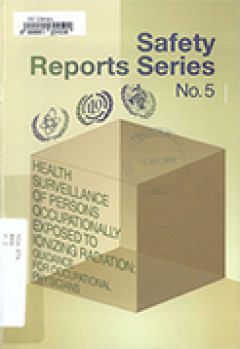
Health Surveillance of Persons Occupationally Exposed to Ionizing Radiation: …
This Safety Report specifies features of work under radiation conditions, the general rules of radiological protection for occupational exposure and the organization of the medical surveillance of workers occupationally exposed to radiation. It supersedes IAEA Safety Series No. 83, Radiation Protection in Occupational Health: Manual for Occupational Physicians (1987).
- Edisi
- -
- ISBN/ISSN
- -
- Deskripsi Fisik
- -
- Judul Seri
- Safety Reports Series No. 5
- No. Panggil
- 594.12

Organization and Implementation of a National Regulatory Infrastructure Gover…
This book consist : Introduction; Legal framework for a radiation protection and safety infrastructure; Basic elements of a regulatory programme; Role of the regulatory authority in emergency; Role of the regulatory authority in relation to intervention in chronic exposure situations; and Assessment of the effectiveness of the regulatory programme. (Jml)
- Edisi
- -
- ISBN/ISSN
- 10114289
- Deskripsi Fisik
- 150 p. : Illus. ; 29 cm
- Judul Seri
- IAEA-TECDOC-1067
- No. Panggil
- 539.722 IAE o
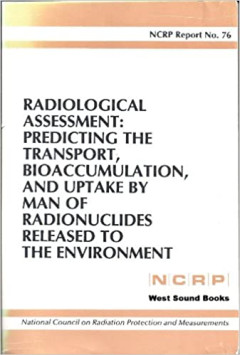
Radiological Assessment: Predicting the Transport, Bioaccumulation, and Uptak…
The purpose of this Report is to review the current status of the application of radionuclide transport models from the point of discharge to the environment to the point of intake by man. This process, called radiological assessment, begins by defining the quantity of radionuclides that are released and enter the environment. Uncertainties in the measurements or estimates of the source term ar…
- Edisi
- -
- ISBN/ISSN
- 0913392669
- Deskripsi Fisik
- 300 p. : Illus. ; 23 cm
- Judul Seri
- NCRP Report No. 76
- No. Panggil
- 628.5 NCR r
 Karya Umum
Karya Umum  Filsafat
Filsafat  Agama
Agama  Ilmu-ilmu Sosial
Ilmu-ilmu Sosial  Bahasa
Bahasa  Ilmu-ilmu Murni
Ilmu-ilmu Murni  Ilmu-ilmu Terapan
Ilmu-ilmu Terapan  Kesenian, Hiburan, dan Olahraga
Kesenian, Hiburan, dan Olahraga  Kesusastraan
Kesusastraan  Geografi dan Sejarah
Geografi dan Sejarah